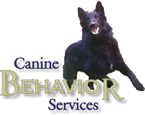
Using Your Dog's Chase Instincts To Improve Obedience
All dogs are fundamentally predators, and as such respond in predictable ways to movement. Put simply: movement attracts. Whether you have a high-energy herding dog, a scrappy terrier, or an elegant lapdog, if something moves, your dog will notice, and if it's interesting enough, likely move toward it. How is this helpful when it comes to training? After all, if your dog is chasing something, he's not paying attention to you, right? He is, if you're the one he's chasing!
Using movement to attract and motivate your dog doesn't mean you have to run laps around your yard with your dog at your heels. Here are a few ways to use your dog's natural response to movement in practical training situations:
- When you want your dog to move toward you. Does your dog love to play keep-away when you call her? Turn fetch into a chase game? Many owners try to "help the dog come" by closing the gap between themselves and the dog, moving toward her as she comes. Unfortunately, this can have the opposite effect of what they want! It may seem counter-intuitive, but the best way to get your dog to move toward you - is to move away. When you call your dog's name, the instant she begins coming, turn and run away from her. This is a simple, natural way to activate your dog's chase instincts (and attention), and get her coming toward you quickly and happily. This works beautifully when playing fetch, too. As your dog picks up the toy, cheer her happily and move in the direction you want her to come (i.e. away). While this technique improves the recall of any age dog, start this when you first get your puppy, and you will have a dog who loves to come when called!
- When you want your dog to move a certain direction. Is your dog difficult to get off the couch, or into the house? Is she hard to move away from the door when someone comes to visit? Many times, the problem here is body language - owner faces the dog, standing still, motivating the dog to do anything but move. Instead, use the "movement attracts" principle: turn and move your body in the direction you want the dog to go. If you want her off the couch, turn away from the couch as you gesture "off". If you want her to leave the door, walk up next to her, then turn the direction you want her to go as you instruct her. Want your dog to come indoors? Turn or move your body toward inside, as you direct her verbally.
- When you want your dog to stay in one spot. The "movement attracts" principle applies here, too. Many owners have trouble teaching their dogs to stay put when told. As soon as they begin moving away, the dog comes with them! The problem often is that the dog has not learned the concept of Stay (or Wait) before the owner begins moving away. The dog naturally follows the movement, can't seem to figure out how to get rewarded, and both owner and dog get into a cycle of frustration. This is one reason why it's recommended that you teach duration before distance, when teaching Stay. This means that you remain next to your dog, and teach the idea of staying put for varying amounts of time, well before you begin to move away from your dog on a Stay. This way, your dog is more likely to succeed, since she "gets" the stay concept, before having to deal with the challenge of wanting to follow your movements.
Play around with this during the week ahead. It's simple but powerful, and a lot of fun! Until next time, Happy Training!
julie
Julie Cantrell BSc, CPDT-KA, CDBC
Canine Behavior Services
www.k9behaviorservices.com |

